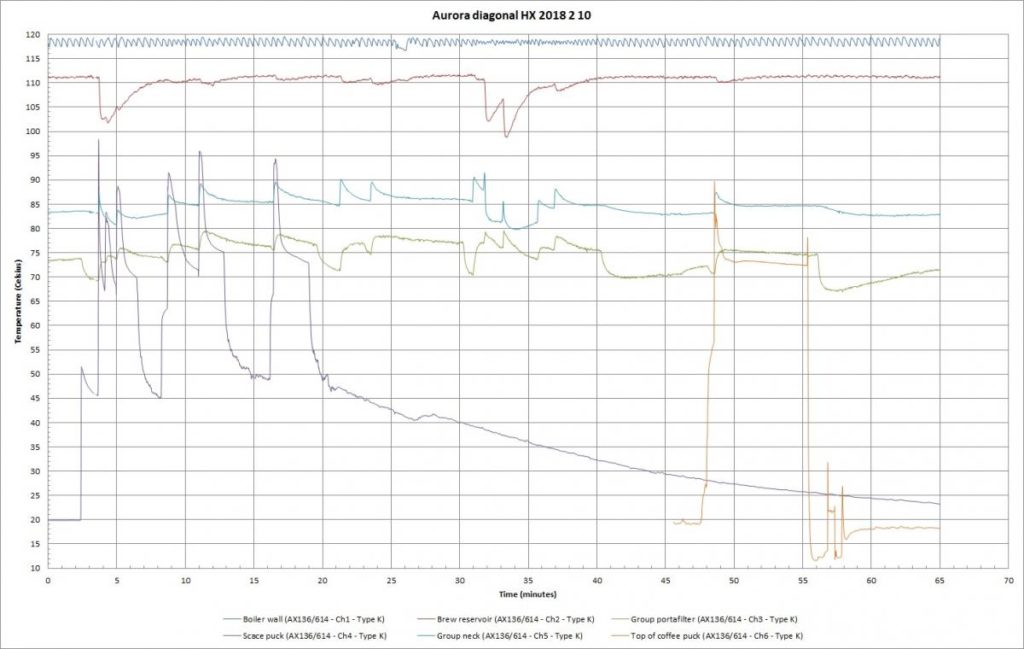
1987 Porsche 911 Turbo Cabriolet
[ED: Re-post from May 4 2018]

This is a longer test (over an hour) on a 1987 diagonal HX machine.
Methodology:
The same methods as were used for the horseshoe HX machine were used with a few minor differences.
- This machine is on 24/7 so there is no warm-up period.
- It had been at idle for at least a couple of hours.
- The same pseudo-Scace device and needle-valve was used to simulate shots.
- The period between simulated shots is generally longer and I did not repeat the faster than commercial usage of the previous test, rather, I waited for the group to recover between shots.
- At minute 3 and 32 there are cleaning flushes – i.e. pulls that were significantly larger in volume than an actual shot.
- At minute 23 a PF filled with real coffee was locked into the group and a shot pulled.
- At minute 25, the steam wand was used to foam milk for a cappuccino.
- The additional orange line that starts at minute 46 is another K-type thermocouple that was placed on top of a puck of coffee before the PF was locked into the group.
Observations:
- This machine has the same pressurestat as the horseshoe HX machine from the previous test and consequently we see the same saw-tooth wave for the boiler temperature.
- With the exception of the cleaning flushes, the brew reservoir is [b]remarkably[/b] stable – exhibiting almost no discernable trace of the fluctuation in boiler temperature. The temperature drop for the outside of the reservoir after a shot is pulled is less than one degree and the recovery time is between two and three minutes.
- The group as a whole exhibits the same tendency as the horseshoe HX machine to gain heat with each shot.
- The recovery time for the group is a little over a minute per degree C of heat gain i.e. essentially the same as the horseshoe machine. As the groups are identical this is unsurprising.
- The shot test with real coffee plus the additional thermocouple starting at minute 46 shows a 90 C peak shot temperature and is quite likely to be accurate.
- At minute 40 I removed the PF to prepare for the next shot and the preparation time is longer than usual because I was fussing with the thermocouple. Removing the PF has a fairly significant effect on overall group temperature as the neck falls to the same 83 C that it was when the machine was at idle.
Conclusions:
- The diagonal HX is about as good as it gets as far as temperature stability of the brew water reservoir goes. The reservoir recovers from what little variation there is in less than half the time that the group takes to recover between shots.
- The slower, more realistic, pace of shot pulls in this test is illuminating. The actual temperature gain seen at the group is between 4 and 5 C per shot. This translates to a group recovery time of five to six minutes – possibly a little slow for a commercial setting, but definitely fast enough for home use and entirely manageable with a cooling strategy such as a cooling flush of a known volume.
- 1987 was better than 1982.
